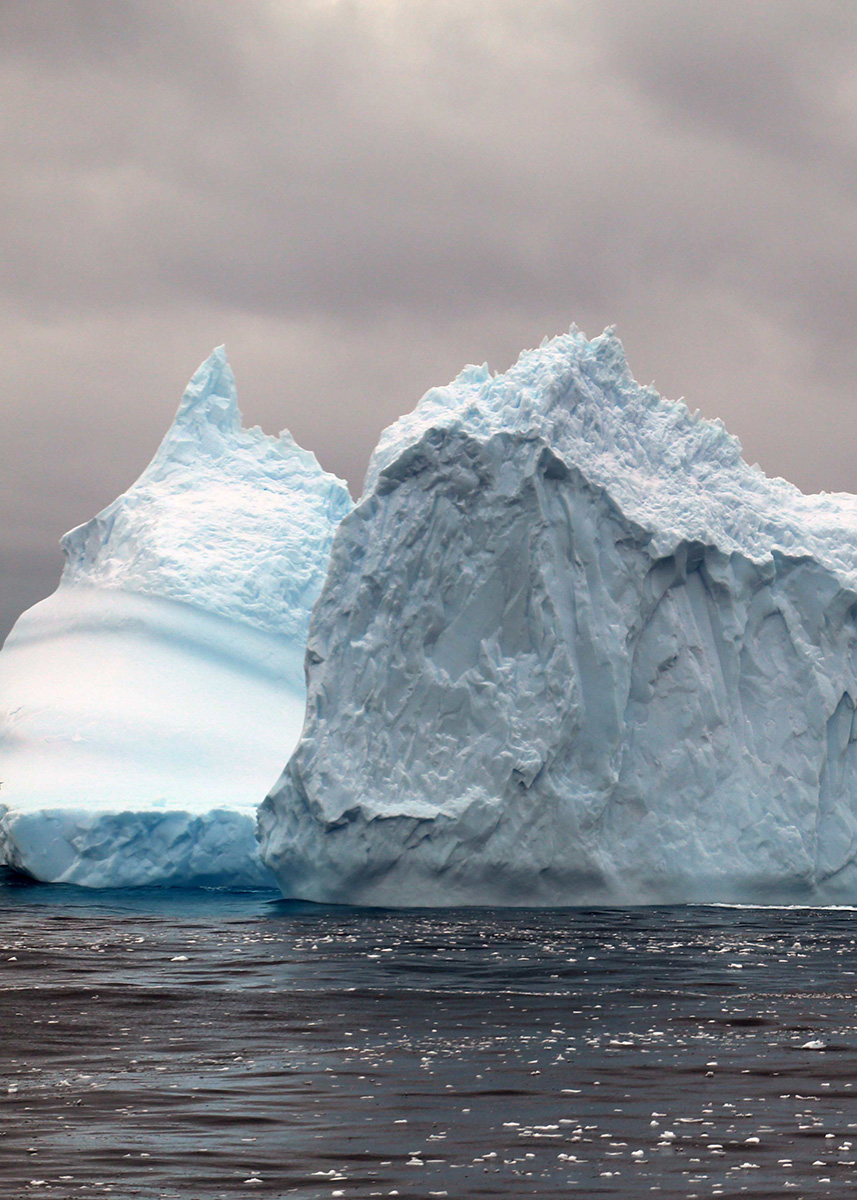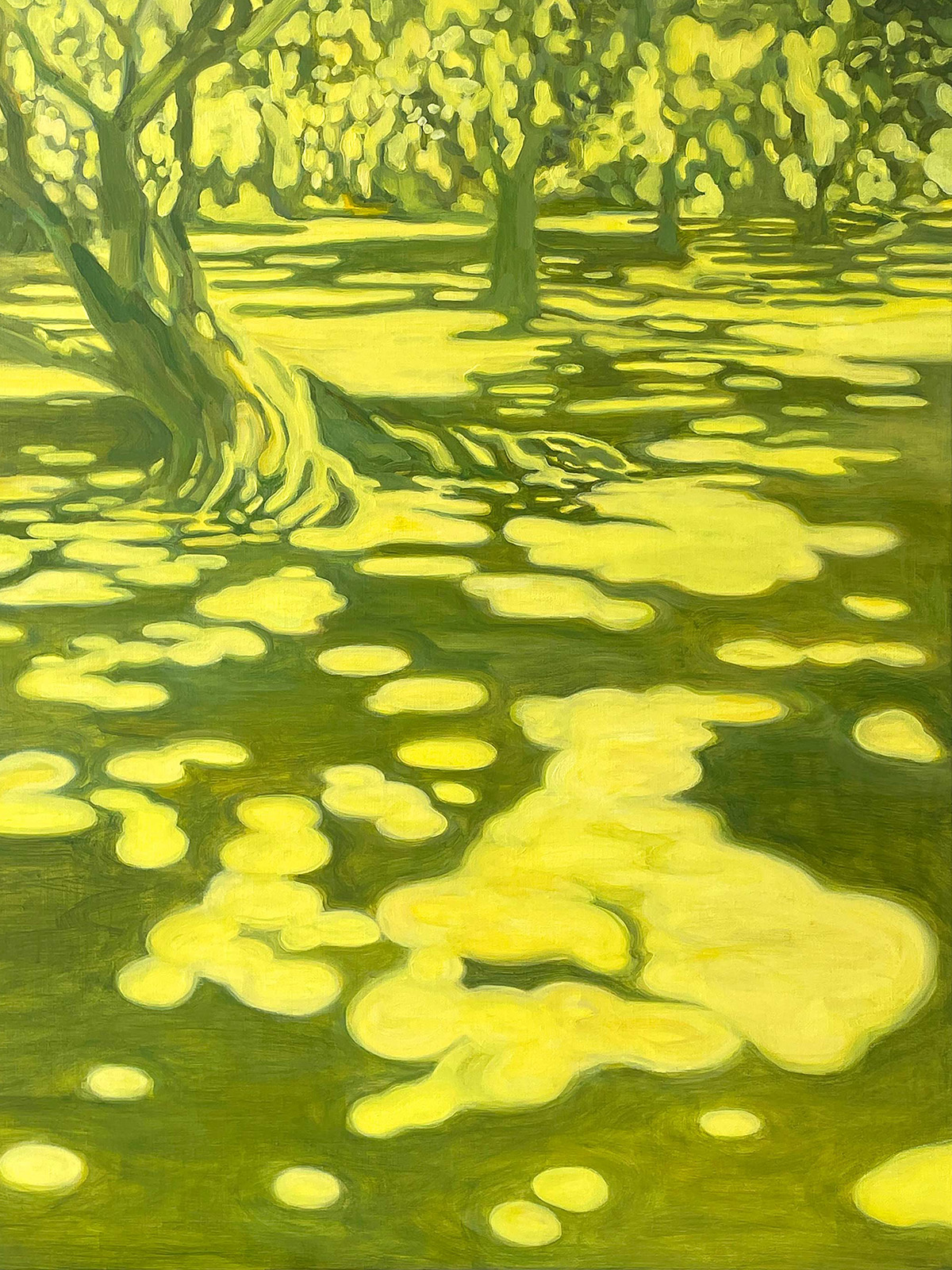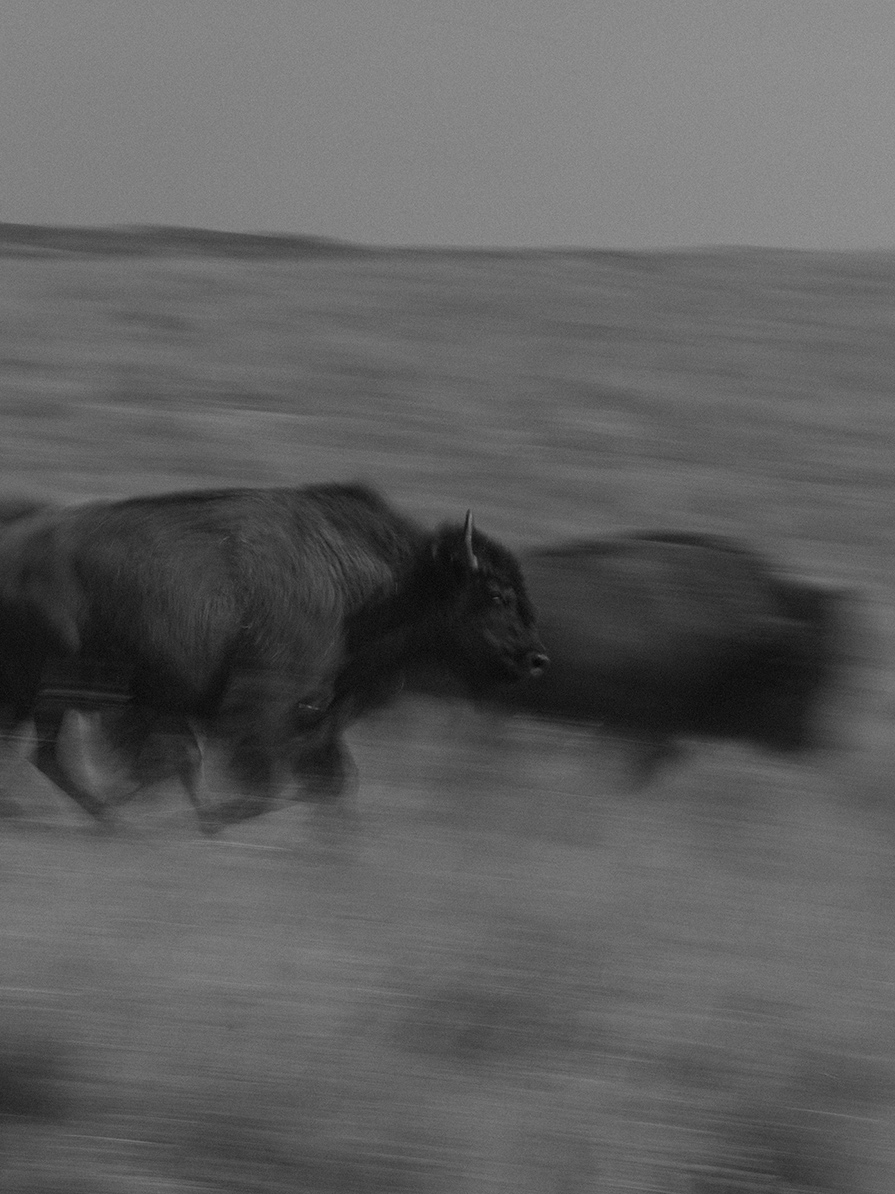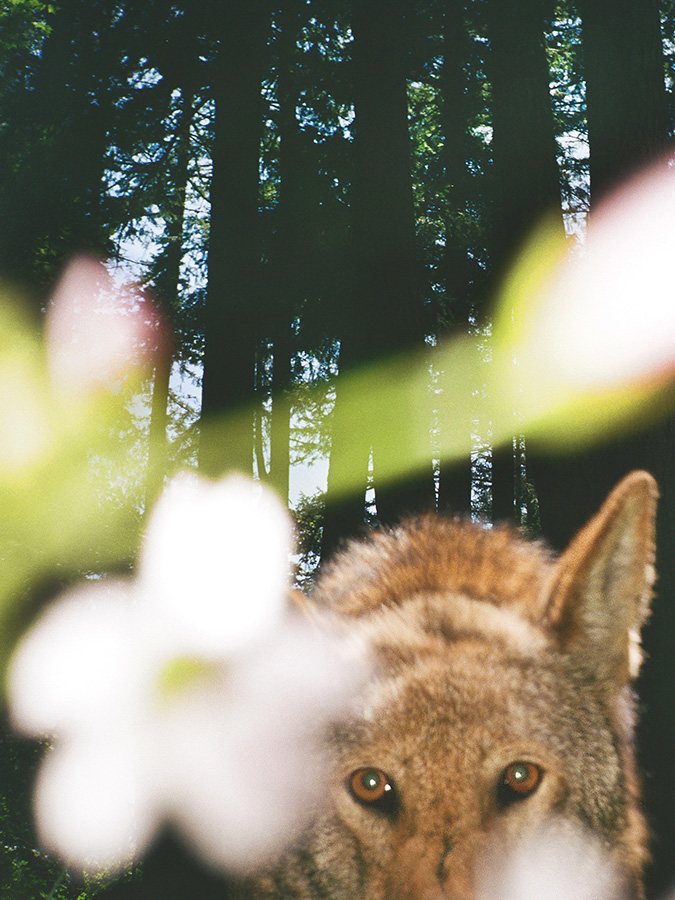
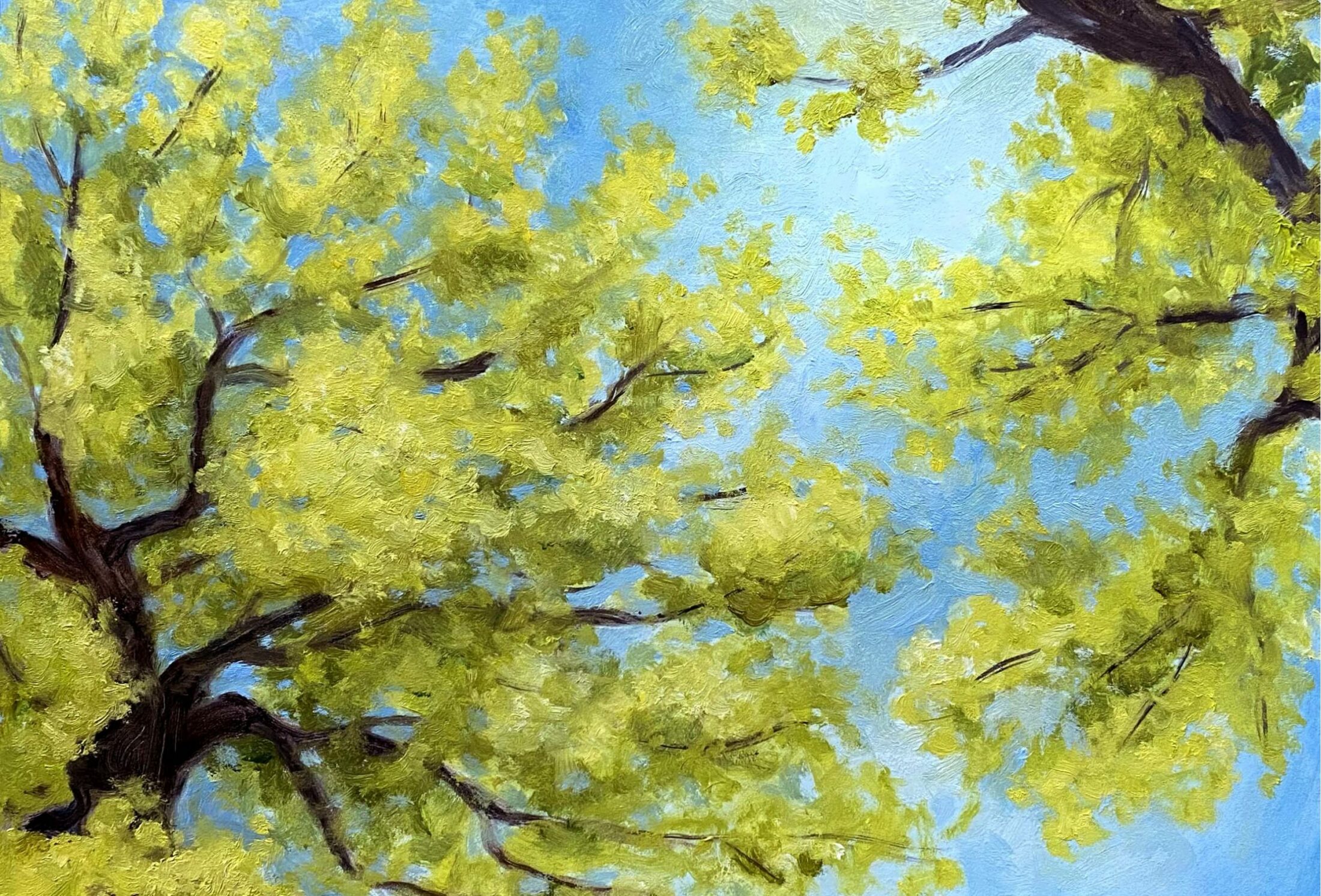
Artwork by Sophia Baraschi-Ehrlich
The Coronavirus Pandemic and the Invisibility of Nature
by Michael McCarthy
Michael McCarthy is a journalist, naturalist, and the author of The Moth Snowstorm: Nature and Joy and The Consolation of Nature: Spring in the Time of Coronavirus, chosen by The Guardian as one of the best nature books of 2020. He is the recipient of the RSPB Medal from the Royal Society for the Protection of Birds and the Silver Medal from the Zoological Society of London. He has previously served as the environment editor of The Independent and environment correspondent of The Times.
Sophia Baraschi-Ehrlich is a painter, illustrator, animator, and graphic designer based in upstate New York. She holds a BA in studio art from Skidmore College and works as the assistant art director for Emergence Magazine.
As rampant urbanization increasingly severs humanity from the living world, naturalist Michael McCarthy explores the ways in which the “anthropause,” ushered in by the coronavirus, has—on an unprecedented scale—made nature visible again.
Some key turning points in human history are not taught in schools, and here’s one. You could reasonably say it was with the invention of farming twelve thousand years ago that we began to separate ourselves from the natural world. Previously we had been an integral part of it: as hunter-gatherers we were wildlife, we were animals, like all the other animals around us—albeit with larger brains and language—as the cave painters of Chauvet and other prehistoric caverns so grippingly make clear. The rhythms and sounds and smells of nature were the only ones we knew; our delights were the delights of nature; our problems and our perils were the ones that nature threw up. But with farming came food surpluses, and with surpluses came settlements, and settlements became towns and then cities; and now towns and cities hold more than four billion people, where we are so far separated from the natural world that nature is not only forgotten but increasingly invisible.
The growing invisibility of nature is a topic that is little regarded by the general public, since such public concern as there is focuses—understandably—on nature’s degradation and destruction. This year we have seen the most drastic estimate yet of the damage human society is causing to the web of life across the globe: the biennial Living Planet Report, published in September by the World Wildlife Fund and the Zoological Society of London, estimated that between 1970 and 2016, global populations of mammals, birds, fish, amphibians, and reptiles plunged on average by 68 percent. It is scarcely to be believed: in less than a human lifetime, more than two-thirds of the vertebrate wildlife of the world has been wiped out. (The condition of invertebrates is probably even worse, but we do not have the same sort of comprehensive figures.)
This is such a monstrous situation, so demanding of our attention, it is no surprise that outside the specialized area of ecological writing, there is little interest in the seemingly lesser question of nature disappearing from view, for much of humanity; and yet it is happening, and it matters just as much. The natural world is not only being destroyed but is also becoming lost to us—we who were formed by it over immensely long periods of time and still carry from it, within us, great and vital inheritances. For although we have been farmers, and subsequently citizens, for about five hundred generations, we were hunter-gatherers for perhaps fifty thousand generations or more, and in recent years we have begun to understand that the earlier period—when we lived as one with nature—is more important for us and for our psyches, even now, than the more recent one.
This understanding has been one of the great advances in human knowledge. Many of the insights about it have come from genetics, from evolutionary biology and the late twentieth-century flowering of neo-Darwinism. In particular they have come from the relatively new discipline of evolutionary psychology, which examines the ways in which the human mind adapted itself to the issues that early members of the species Homo sapiens faced in their daily lives as, over thousands of generations, they evolved inherent traits and instinctive reactions, which are with us still.
You may well be familiar with these developments, but if you’re not, let me give an example. Small children like to hide. If you have children, or if you have observed children closely, you are aware that this is so. If you asked me why, I would say I do not know—yet it might be the case that, tens of thousands of years ago, when predators or enemies attacked early groups of humans, the small children who didn’t hide didn’t survive to pass on their genes to future generations. They were killed—eaten, whatever—and the only genes that were passed on were from children who hid; and so the hiding gene became universal, and now all little kids possess it.
I do not actually know this. But it seems to me a fairly plausible explanation for such an inherited instinct. We possess many of these deep feelings, which go back to our time in the Pleistocene, the pre-agricultural epoch of the ice ages—these sometimes-curious likes, dislikes, and tendencies, ranging from our fondness for sweet foods to our fear of snakes and spiders; from our acute sensitivity to falseness in others to our love of panoramic views. They helped us survive, remain within us, and are known as “human universals.” Taken together, they indicate that the psychological legacy from our hunter-gatherer forebears—from the hundreds of thousands of years when we lived as an integral part of nature and were not separate from it—is formidable, even today. But another development has shown that it is more than formidable: it is the key to who we are.
This is the establishment of the connection between nature and human well-being, physical and mental; I mean the establishment of it as empirically real, even in an era that demands scientific evidence. It, too, is recent. The idea of the consoling power of nature is of course very old, and the regenerative benefits to us of exposure to the natural world had long been supposed, though often in a sort of obvious, generalized, slightly patronizing way: of course a walk in the park will do you good, like a nice cup of tea. It was not until 1984 that we began to open our eyes to the true dynamic character of the link between nature and our psyches, with the publication of Roger Ulrich’s groundbreaking paper in the journal Science, “View Through a Window May Influence Recovery from Surgery.”
Ulrich was an architect specializing in hospital design, and while working at a hospital in Pennsylvania, he discovered something uncanny: over a period of nine years, patients who underwent gallbladder surgery made substantially quicker and better recoveries if they had a natural view from their beds. Some of the windows of the hospital wing looked out onto a group of trees and some onto a brick wall, and those patients lucky enough to have the tree view, Ulrich found, recovered faster, spent less time in hospital, required fewer painkillers, had better evaluations from nurses, and experienced fewer postoperative complications than those who had only the wall to look at. The data were indisputable: they showed that contact with nature, even if only visual, clearly had a measurable effect on people’s well-being.
Ulrich’s remarkable finding sparked an explosion of research into the human-nature connection, and there is now a vast literature illustrating the effects of exposure to the natural world on our physical and, especially, our mental health, which is increasingly becoming part of clinical practice. Nature, it has become clear, is the biggest reliever of stress because the natural world is where we originated, and for our psyches, it remains our home. William Wordsworth may have understood that instinctively, but we now know it explicitly, and our recent understanding of it is a significant historical moment. So it is an awful irony of history that just when we are at last starting to unlock the deep reasons why the natural world matters to us so very much, we are losing sight of it; it is becoming invisible, in every country.
Two great forces are driving this. The first is urbanization, which is rapidly increasing all around the globe. According to the demographers of the United Nations, at some unknown point between July 2006 and July 2007, a momentous milestone was passed: the percentage of the world’s population living in towns and cities exceeded 50 percent for the first time. The latest UN figure, for 2018, is 55 percent, representing 4.2 billion people; it is expected to increase to 68 percent by 2050. So from now on, most people on the planet—indeed, two-thirds of them in thirty years’ time, six billion out of an anticipated nine billion souls—will live urban rather than rural lives.
It may seem a truism to say so, but in terms of contact with nature, to live an urban life in the twenty-first century is something very different from life in towns and cities in earlier ages, when, as Jeremy Mynott points out in his fascinating book Birds in the Ancient World, “Nightingales could be heard singing in the suburbs of Athens and Rome; there were cuckoos, wrynecks, and hoopoes within city limits.” Despite the famous song, there are no nightingales singing in London’s Berkeley Square; and New York’s Central Park, a true haven for bird watchers, is a sort of wonderful exception that proves the rule about cities: in them, nature can be very hard to find. An urban life, especially if you are poor and your town or city is big, means that you are much less likely to have access to the rhythms of the growth cycle; to quiet; to the visibility of the stars; to clean air; to nonindustrialized rivers and natural forests; and to wildlife—to birds and wild mammals, to insects and wild flowers. Instead, you must march to other rhythms, such as the inconvenient working shift, and the snatched lunch break. Neon lighting, taking garishness to new heights, in many cities replaces the stars; smog replaces clean air; and traffic replaces biodiversity, which becomes a folk memory of wild plants and creatures freely existing, seen merely in visual representations. Perhaps the biggest loss of all in living an urban life is the intimate feel for the natural calendar, a feel that was one of the key attributes of our prehistoric ancestors and that has persisted among people living in the countryside. Not entirely lost, perhaps: even in a world of high-rise blocks you know it is warmer and sunnier in summer than in winter—but something subtler has gone. I mean the feel for the switches and the transformations, for the tiny signs, easily stifled by traffic noise and electronic music or submerged by pollution, that changes are underway with the Earth, above all in the great rebirth of spring—signs that have produced intense pleasure, excitement, and indeed reverence in us since we began to be human, and that even today can be among the greatest generators of happiness and of hope.
That’s what gets lost with urbanization. Nearly all of the expected increase in it between now and 2050—90 percent—is expected to take place in Africa and Asia, much of it in their “megacities,” the mushrooming metropolises of ten, twenty, thirty, going on forty million people that will be one of the most notable facets of human geography in the twenty-first century. By 2030 the world is expected to have forty-three megacities, alongside hundreds of “smaller” cities that will unstoppably expand to a million-plus, three, five, seven million people and more. However, in the developed countries of the West, we are largely there already. Our nations are predominantly urbanized, increasingly so since the end of World War II, with the United Kingdom and the United States now having a remarkably similar urban-rural split, with about 82–83 percent of the population in towns and cities and 17–18 percent in the countryside. What is driving the even further distancing of nature for those of us who have left behind the fields and woods is the second great force: the influence of the electronic screen.
It began in the 1950s with the increasing popularity of television, but then, starting in the 1980s with the advent of the personal computer and the computer game, our lives became increasingly dominated by the screen; and this process was given an enormous boost with the arrival of the internet in the 1990s. The great turning away from nature that the screen has helped bring about has been best illustrated with children, especially by the author Richard Louv in his landmark book Last Child in the Woods. Louv documented vividly—and much subsequent research has confirmed—how young people were leaving the world of outside, no longer playing in the fields and woods and parks where their parents played; for their leisure time, they were retreating to the world of the screens, back inside the house. Even in the ’80s it was starting to happen: Louv quotes a boy from San Diego, who said, “I like to play indoors better ‘cause that’s where all the electrical outlets are.” By the turn of the century, the results of children’s consequent alienation from the natural world, Louv said, included diminished use of the senses, attention difficulties, and higher rates of physical and emotional illnesses; and he gave the syndrome an unforgettable name, which really is applicable to us all: “nature-deficit disorder.” But Louv published his book in 2005, when Facebook was in its infancy, and a full two years before Steve Jobs launched the iPhone and, with it, the full-blooded addiction to social media and electronic devices that has become the defining feature of our age. By 2019, 96 percent of Americans owned a cell phone of some sort, and more than 80 percent owned a smartphone, as did nearly 75 percent of the population of the top ten developed countries. That’s where people look now—at their screens. That’s where they direct their gaze. How many look at the natural world? Nature’s invisibility is intensifying far beyond what Louv documented among children fifteen years ago.
In nature, 2020 was not a lost year. Just the opposite.
It is in this context that the coronavirus pandemic of 2020, this great world-historical event, assumes a significance other than that of destroyer of countless lives and demolisher of national economies; for across the globe, directly or indirectly, it has frequently made the natural world visible again, and led people to look upon it, and reflect. It is hard, and to some it may well seem inappropriate, to draw positive conclusions from such a tragic set of circumstances, which have produced such heartache for countless families in country after country, with more than a million dead across the world. Yet with the environment, it is simply the case that the impact of COVID-19 has in many ways, albeit bizarrely and incongruously, been constructive.
The main reason, of course, is the “anthropause,” as it has quickly become known: the great hiatus in human activity resulting from the pandemic-inspired lockdowns in many nations in the first half of the year, which are thought to have involved nearly four billion people in total. In environmental terms, the 2020 anthropause is a colossal event, one of the biggest and most significant ever to have happened to the natural world, certainly since human society began despoiling it on a large scale after World War II. It is a planet-sized breathing space. We have seen something similar before in lesser terms, for example, with the complete withdrawal of human activity from a wide exclusion zone around the damaged nuclear power plant in Chernobyl in Ukraine, leading to the area being reoccupied by wildlife. But the COVID-19 anthropause involves the entire globe; it involves large parts of the gargantuan nature-destroying human enterprise, worth more than $80 trillion, slowing down and coming, if only temporarily, to a halt. Before it happened, it was unthinkable that it might. Now that it has, we look upon it openmouthed. We can get a sense of the gigantic scale of this event from a study released in October on the resultant fall in global emissions of carbon dioxide: in the first six months of this year, the total was an 8.8 percent decrease from the same period in 2019, a drop of more than 1.5 billion tonnes of CO2. Would that we could combat climate change by doing that on an annual basis! The study proclaims, “The magnitude of this decrease is larger than during previous economic downturns of World War II.” In April, at the height of the lockdowns, the fall was 16.9 percent.
The effects on the natural world have, in some cases, been spectacular, and nowhere more so than in the city of Jalandhar in India, whose inhabitants awoke one morning in April to find that their northern horizon had been transformed into something white and shimmering and ghostly—almost a vision, but nonetheless real. It was the snowcapped Himalayas, more than a hundred miles away.
Such has been India’s load of air pollution—from transport, energy generation, and industry—that the more than 850,000 inhabitants of this city in the Punjab had not seen the distant peaks for more than thirty years, yet two weeks after the Indian coronavirus lockdown began, the air pollution had plunged so much that they were suddenly discernible, in all their shining majesty. The citizens of Jalandhar tweeted their astonishment. They tweeted their delight. Lest others elsewhere should doubt what they were gazing at, they tweeted the pictures. And if you look at them, you see the natural world, in the most striking way possible, made visible once more.
There have been many other ways in which nature came to people’s notice once again during the anthropause—largely cases of the natural world prospering, of natural processes resuming, when pressure from the mammoth human enterprise was lessened. Birdsong, drowned out by the noise of modern life, became audible again in many places in many countries. In Venice the canals, no longer churned up by tourist boats, were clear enough to see fish again. Wild boar and deer came back into car-free European cities; in Llandudno in North Wales, wild goats roamed the streets. Jackals appeared in broad daylight in the urban parks of Tel Aviv; pumas were sighted in the center of Chile’s capital, Santiago; and baby sea turtles made it safely to the water on Brazilian beaches empty of sunbathers, joggers, and dogs. Some of these instances were in the nature of temporary novelties, but others were significant and suggested possibilities for the future: to give an example from my own experience, the historic landscape of Richmond Park in outer London was reintegrated and rewilded by the absence of the motor-vehicle traffic that had previously cut it into pieces, and no one who saw it that April, May, and June will ever forget it.
Yet perhaps the most significant way of all in which nature has come back to us during the pandemic is that people have turned to it themselves. This was very noticeable in Britain, where, in a remarkable conjunction, the first lockdown coincided with the loveliest spring that has ever been recorded in the UK. The British spring of 2020 had more hours of sunshine, by a very substantial margin, than any previous recorded spring; indeed, it was sunnier than any previously recorded British summer except for three. It meant that, just as working life in the human world was hitting the buffers, life in the natural world was flourishing as never before, and this almost certainly intensified the renewed interest in nature from people seeking lockdown diversions. Their numbers, it is clear, were substantial.
Let us take just one astonishing figure: the increase in page views for the webcams run by the forty-six Wildlife Trusts that look after nature on a county-by-county basis across the UK. Many people enjoy watching wildlife via webcams, which often show surprising and intimate moments at the nest or in the burrow. In the period from March 23 to May 31, 2019, there were 20,407 page views of the trusts’ webcams; but in the period from March 23 to May 31, 2020, the period of the first British lockdown, there were 433,632 views, an increase of 2,024 percent.
Why such numbers? Because in the coronavirus spring, people turned to the natural world for solace at a time of quite unprecedented stress. Let us remember the colossal size of the event. The British environmentalist and political analyst Tom Burke says: “The COVID pandemic is the first time all eight billion people on the planet have had the same thing happen to them at the same time.” There have been three shocks from it, he says: the health shock, which we will hopefully get over soon; the economic shock, which will take much longer; but also the psychological shock, which will be lasting. With whole populations confined to home, stress was one of the pandemic’s principal effects, the level of which to some extent depended on your circumstances. It was greater if you were poor than if you were rich: it was substantially harder to self-isolate in a small apartment on the fifteenth floor than in a mansion. It was greater if you were self-isolating with people who were difficult, such as demanding children or abusive partners; indeed, with the latter, it could be dangerous or even fatal. It was greater if you were on your own, without support networks. But for millions of people around the world, there was some level of strain and anxiety brought about by the abrupt ending of normal social intercourse, and the very real fear of infection.
Those who turned to nature for consolation found nature up to the task. I was one of them. In the spring lockdown, I walked out every day during my permitted period of exercise, as many people did, seeking the nearest greenery to my home in the London suburbs; in my case, it was the towpath of the River Thames and Richmond Park, the largest of the royal parks, as well as the leafy suburban streets themselves and our small but well-loved garden. The springtime itself was magnificent, with every week bringing wondrous transformations in the natural world, in its trees and wild flowers, in its butterflies and its birdlife; but for it all to be happening against a backdrop of such widespread illness, heartache, and death seemed so tragically incongruous that I thought it required memorializing—it was a unique event. When I found that two friends of mine—Jeremy Mynott and Peter Marren, both accomplished naturalists who lived in the countryside—were quite by chance noting down the spring in detail themselves, we decided to work together and turn our recording of it into a book, which became The Consolation of Nature: Spring in the Time of Coronavirus.
In writing it with them, I did indeed feel that the coronavirus spring was unique, but I also felt that it was not just paradoxical in its character but important, somehow. It seemed to matter greatly for our relations with the environment, in some way even beyond its cherished ability to console, which at first I couldn’t quite put my finger on. But gradually I began to see it, and it was so simple, so obvious, that you were likely to miss it. It was the fact that it was there. The natural world was available to us, even at such a traumatic time. It had not been thrown off course, it had not been knocked out by the pandemic, by this enormous event that was knocking out everything else, which was making 2020 a lost year in human affairs. At this time of chaos in the world of people, nature was a constant, as it has always been. COVID-19 had wrecked, if only temporarily, so many human artifacts; it had stopped business, trade, travel, sports, education, entertainment, and social gatherings of all kinds—but it hadn’t stopped the spring. In nature, 2020 was not a lost year. Just the opposite.
If you saw it like this, you suddenly saw once again the unique worth of the natural world, which produced us and shaped us, which holds our origins, and which remains the true home of our psyches, as Roger Ulrich began to discover—and which, even today, when so many have turned their backs on it, continues to give us everything, from the air we breathe to the water we drink and the food we eat. You saw anew its fantastic power and resilience. You saw the wonder of it. And let me say, you also saw the need for its benefits to be available to everyone, and for the issue of equitable access to nature to rise up the political agenda. Because if we examine the consolation of nature in the coronavirus pandemic, it is only right that we should ask, Who could obtain it? Not everyone, though it was available for more people than implied by the 83–17 percent urban-rural split in Britain: gardens, for example, may have a big influence on people’s lives, and it is estimated that 87 percent of British households have access to a garden. But to state the obvious once more, nature is much harder to find in cities, and the issue of urban green space needs to take on a much greater relevance in the postpandemic era as we try to rebuild our shattered economies in an environmentally sound way—if legislators can deliver that. Legislators everywhere could start by following the example of the Green Party member of the British Parliament, Caroline Lucas, who suggested last year that no new housing development should be sanctioned more than one kilometer from a public park.
I am writing this in November, in the middle of the second British lockdown (hopefully the last). I am still seeking out the natural world each day from my suburban-London home and am now enjoying the autumn colors and the winter bird populations, just as Americans can do with different species from snowy owls to sandhill cranes; and in December, pandemic or no pandemic, the winter solstice comes to us all, which I think of as an immensely happy day, because then the light begins to come back, and nothing can stop it. This sense of nature as an unstoppable force has been strongly impressed on me (and doubtless on many others) by the great world-historical event of the coronavirus, tragic paradox though that may be; nature, which has been lost to sight so widely, has suddenly been made visible once again by the pandemic, by the extraordinary circumstance of the anthropause, and most of all, by people’s own need to seek out nature as a relief from unprecedented stress. Those who have sought it have not been disappointed in the natural world, in its ability to console us, repair us, and recharge us; most of all, in its ability simply to be there, often unrecognized and unacknowledged, but giving life to every one of us, even as human artifacts are crumbling all around.

